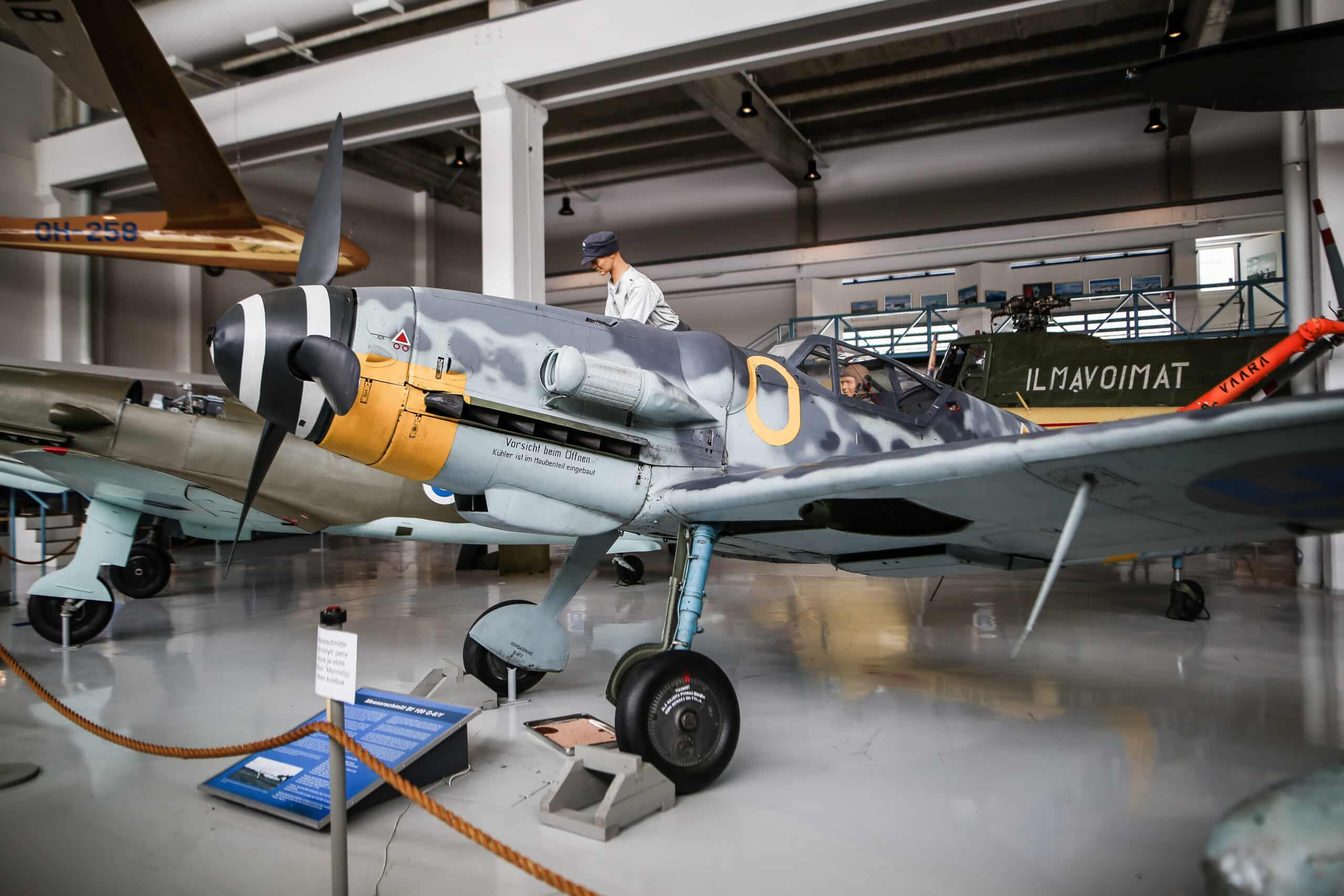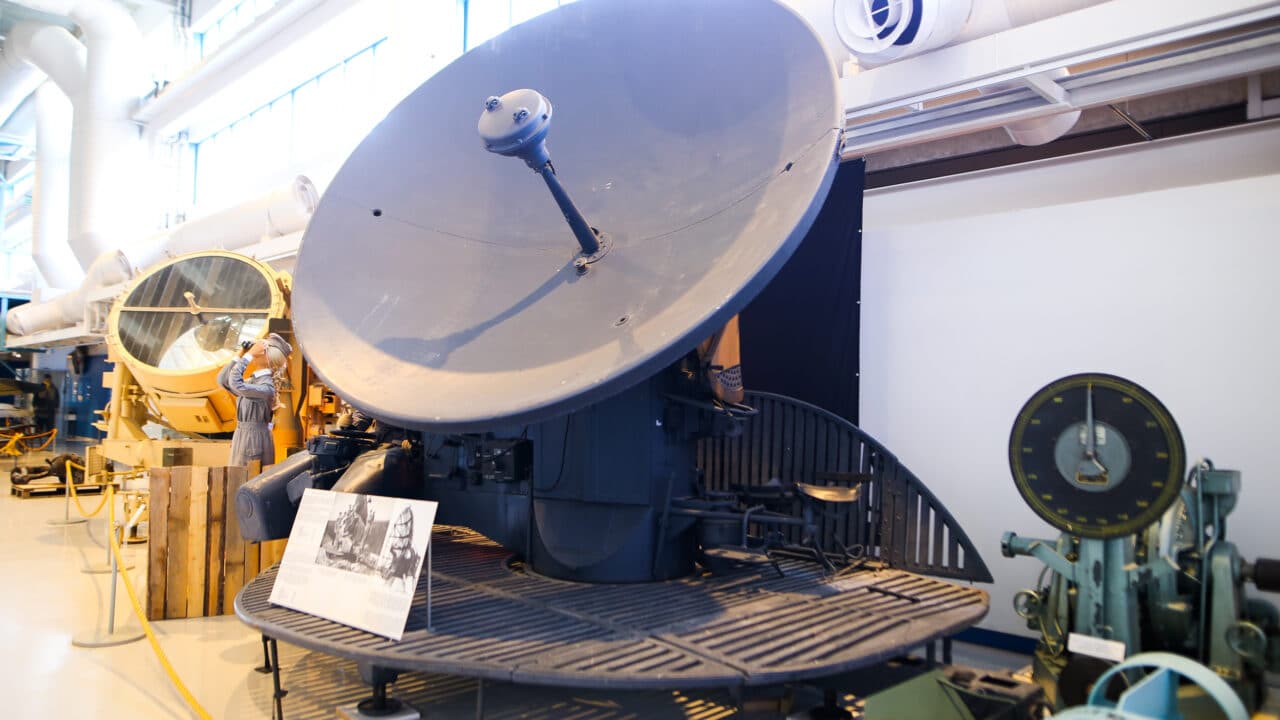The Bf 109 is a German single-seat fighter. The aircraft is all-metal apart from the fabric-covered ailerons and elevators. The development of the Bf 109 began at Bayerische Flugzeugwerke under direction of Willy Messerschmitt in 1934 after the German Ministry of Aviation had commissioned four airframers to design the prototype of a monoplane fighter. The prototype of the Bf 109 flew in May 1935, and evaluation of the candidates started in October.
Finland had already started negotiations with Germany for the acquisition of fighters before the Continuation War. The first 30 Bf 109s were of the G-2 version and arrived in Finland in March 1943. The Finnish Air Force had 162 Bf 109s in its inventory. 48 of them were G-2 variants. From the spring of 1944 on, 111 G-6s and three G-8 reconnaissance versions were obtained, also the latter being used in combat role. The “Mersu” was the most potent and up-to-date fighter of the Air Force during the war. Its strengths were high speed and good climb rate along with powerful armament compared to its predecessors.
Finnish Bf 109s achieved 663 victories.
The Bf 109 remained in Finnish service well into the post-war period. The last flight of the type was in March 1954 by the museum’s MT-507.
Link copied!
Additional info
Operating time
1943-1954
Manufacturer
Messerschmitt A.G., Germany
Measurements
Wing span 9.92 m; Maximum speed 630 km/h; Length 9.02 m; Height 2.50 m.
Type
Single-seat fighter
Object number
316
Location
Main exhibition




